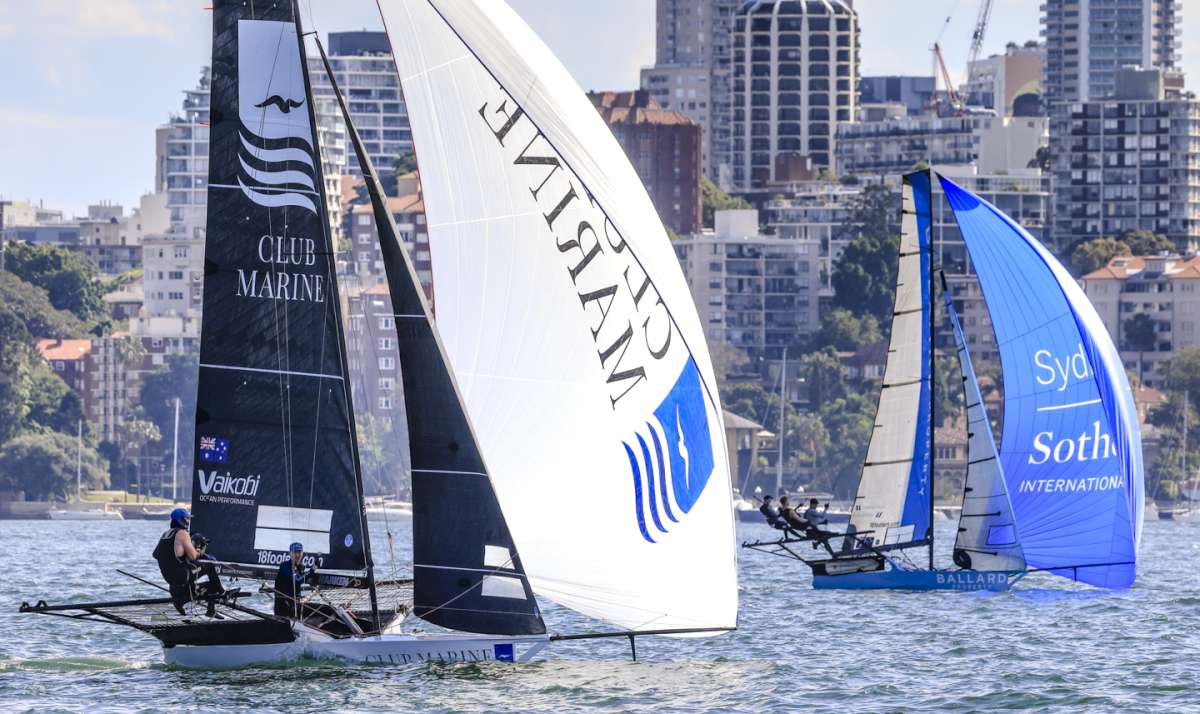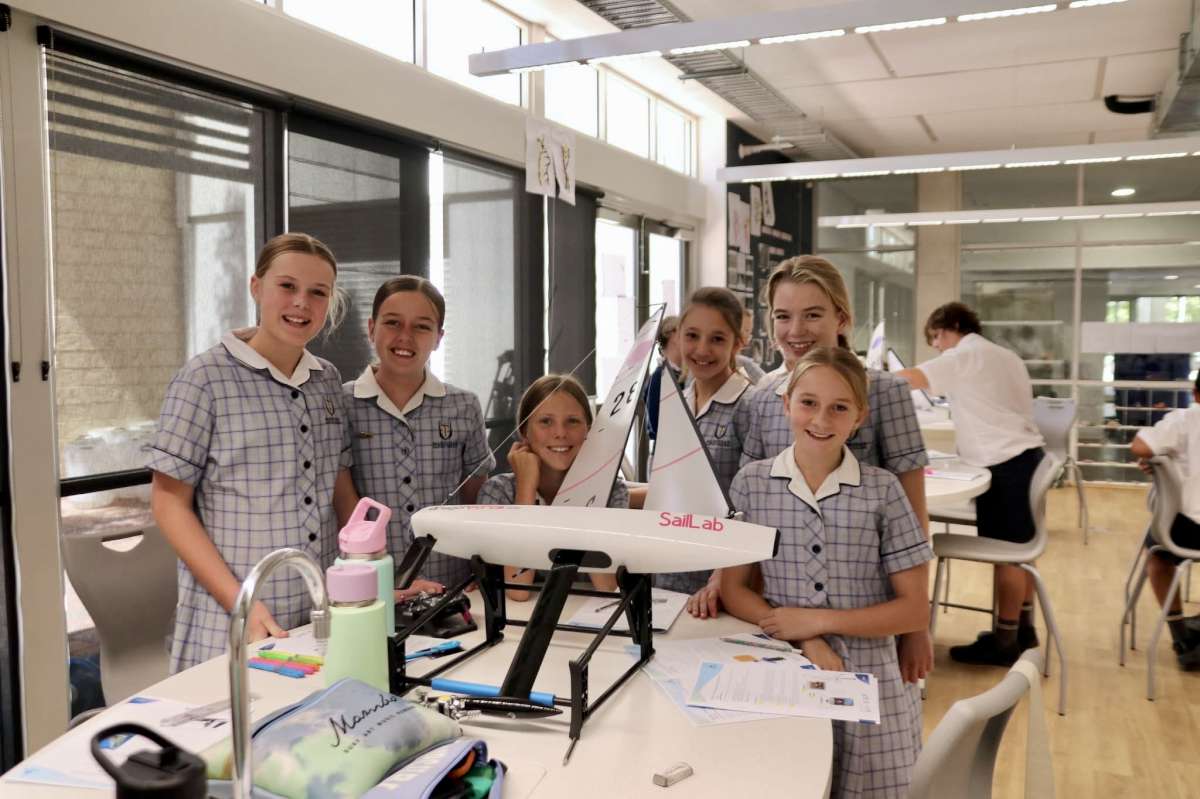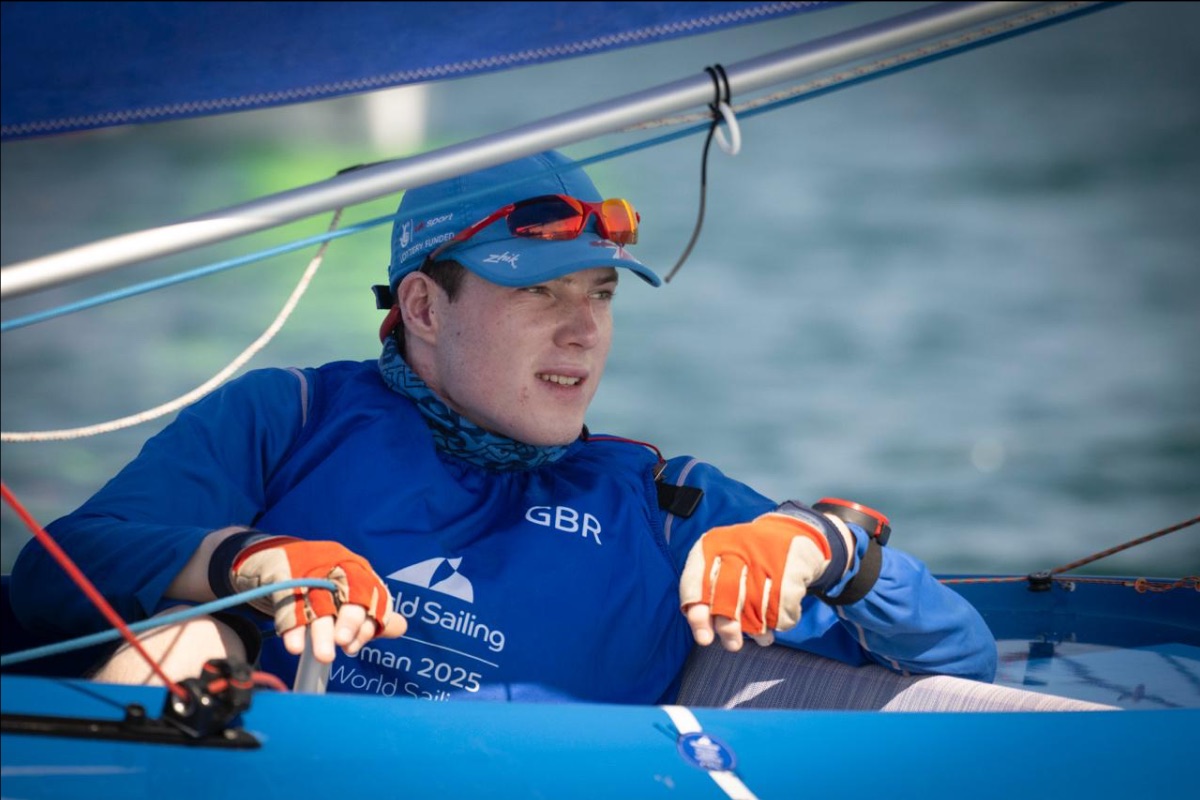Seawind have built a reputation on investigating what obstacles monohull sailors have in buying catamarans; then figuring out how to change those ideas to make them more appealing. For this reason I like the way Seawind have looked at the problem with daggerboards; these appendages certainly make a catamaran sail faster both upwind and down with the added bonus of creating an even-shallower hull depth for closer gunkholing; attractions definitely appealing to monohull cruisers.
The launch of the 1190 Sport sees Seawind optimise its old 1160 to make it more of a performance craft. Work done by Francois Perus of Corsair trimaran fame, in collaboration with Seawind’s Alan Carwardine, has resulted in a weight reduction of 600 kilograms compared to the Seawind 1160 Lite. Her daggerboards not only improve her pointing ability by five to seven degrees but, when combined with her high aspect retractable rudders, also reduce the wetted surface area by over seven square metres, reducing drag.
But daggerboards are an annoying intrusion, both on deck and down below. In the same way Seawind took the problem of access between aft deck and indoor saloon by developing the fold-up, tri-fold doors, they have made daggerboards an almost invisible addition. Firstly, they do not pull up above the deck line, therefore not encroaching on the side decks. Down below the boards are housed in mouldings integral to the hull walls, barely noticeable and certainly not hindering passage along the hull.
To achieve this, however, may create some compromises in other areas. Probably the most significant worth checking would be to see whether, due to the boards not being so deep, sailing performance is affected.
Owner Doug Jackson, of our test boat Pirate King, bought the catamaran last Christmas. “I got a catamaran to prove to the wife that sailing was steady,” he explained.
“I then got the 1190 Sport to also prove that the faster we got to our destination the better.
So it all worked out!”
Down below
Navigation station is central on the port side hull, opposite the encased daggerboard and open to the saloon above. A swingout seat is a simple, neat idea, which, it appears, is one of the design philosophies behind this yacht.
Port hull is the master cabin and the lateral double bed is forward of the nav station. It is a full size at two metres long, stretching under the bridge deck saloon. Headroom here is 185 centimetres. Beside long hull windows there is a hatch above the bed and another above a handy forward seat for getting dressed.
There is plenty of storage space, an oft-heard moan regarding catamaran cabins, including the forward locker providing hanging space along with shelving.
At the aft end of the port hull you step down into the head and shower, a fairly simple set-up that is bright and breezy. This may be a tad gross, but I like having a head up the aft end. It means, most of the time, the smells emanating will be blown straight over the stern instead of back along the deck and into the cockpit.
One thing I would also like to note is the use of a shower curtain as opposed to a folding plexiglass door; showering cubicles in yachts nowadays are certainly getting as large as those you would find in a standard hotel room, but I do like the idea of a shower curtain that does not hurt the elbows when the boat inevitably lurches while performing your daily routine. A handy handrail on the aft bulkhead is there to grab, if you need to catch yourself from slipping through the curtain.
Behind the aft bulkhead sits the gas hot water generator, the steering system and, through another hatch, access to the outboard wells.
Dominating the starboard hull space is the central galley. Lots of light through two hull windows and deck hatches as well as open access to the saloon. Twin freezers in this version indicate an intention for long cruising trips ahead. There is one of those small bar fridges above a bench, which although small is at eye height for easy access.
This is a serviceable kitchen, the cooktop is a three burner with no oven and storage space is not overly generous. Saving graces come from not having to have things gimballed or built to cope with heeling.
Hatches on the floor open to allow further storage, our yacht owner, Doug, used it for his wine.
Forward of the galley is another double bed under the bridge deck; this fore and aft bed is in fact the largest onboard.
Forward of that you step down to another head cabin, still with plenty of room. This is not the standard layout so owner Bruce requested the option. Behind a locker door forward of this is the easy access to all the water pumps.
To the aft end is the third double bed cabin, housing the smallest bed but still big enough for a comfortable twosome. Both these cabins are light and airy but lack practical storage space for long trips.
Saloon and aft deck
With the galley and nav. station downstairs it leaves the main saloon area quite uncluttered, open and spacious. Six large windows around the cabin top ensure the feeling of being outdoors plus provides excellent sight lines for the two steering stations. The two central windows are opening hatches for when the yacht is at rest or heading off-wind, the airflow gained from these is considerable. Five jammer latches ensure a tight seal when sailing upwind.
With such large saloon windows you might think it would make the saloon quite hot but, when those windows are open the flow through such a large airy space is considerable.
As with all multihulls, there is little need for handrails or fiddlework around the cabins, this allows nice flat surfaces and unbroken space. Seawind have used its carbon fibre knowledge here to make some nice architectural flourishes with a lot of the flat surfaces done in clear resin over carbon fibre mat. It looks good.
Walking across the bridge deck saloon is a solid feel underfoot. Ostensibly the build is the same as the 1160 Lite but this is still a rigid, solid structure, more on the construction later. The rest of the decor is light befitting the urge by Seawind to keep the build light on weight.
The saloon table is a simple affair on a solid ram. It can be swivelled for dining or dropped down to make another double bed. The bench seating houses the batteries with plenty of space for more.
The beauty of this saloon, of course, is its openness to the aft deck; the patented door raising system makes it one big area for entertaining or lounging around without getting in each other’s personal space. Bench seats across the aft guardrail flank a good marine barbecue, with the gas bottle under the starboard seat.
The port steering station is the master with the twin outboard controls, all useful navigation and boat control instruments, sail controls, port daggerboard control plus a comfortable seat. A chartplotter sits on a swing arm in the saloon so it can be moved to view indoors or outside.
The seatback is also reversible so it can be used to talk with those on the bench behind when not used for steering. The starboard station has the sail and starboard daggerboard controls as well, but uses a fibreglass moulded lazarette locker as the seat. It includes a single instrument panel.
Both stations have a solid fibreglass rope box that is quite spacious; often these pockets are too small to cope with the amount of rope, but these are deep while remaining out of the way. The mainsheet traveller is on top the deck roof with two solar panels as standard, leaving the aft deck remarkably rope free. Owner Doug upgraded to four solar panels on the targa roof.
The view from behind both wheels is fantastic, with such big windows and an open aft deck there is no excuse for not being 360°-aware of your surroundings. Both wheels are a lovely black carbon fibre oval shape, so much nicer than the standard tubular stainless wheel.
The solid back deck roof, however, needs some hatches or, at least, a viewing window to check the sail settings. It is not a big problem as it is easy enough to lean out and look up but, you know, laziness!
On deck it is easy to move around as there are no daggerboards sticking up from the deck. Handrails along the cabin top for safety and a gooseneck at around one metre height makes sail handling a breeze.
Forward of the cabin top are the various lockers to hold all your sails, fenders plus plenty of other paraphenalia; as well as the 700 litre freshwater tank and 270 litres of fuel. A good spot for them to be.
Let’s go sailing
I would like to make one thing clear straight up, while this is a ‘performance’ catamaran this is nothing like those supercharged speed machines you may have seen online. That is not Seawind’s raison d’etre. Pirate King owner Bruce, certainly, would not have been able to make his purchase had he shown his partner something so exotic.
This baby can fly but in a leisurely, safe manner. Daggerboards may make a difference, but we also all know the liberal use of carbon fibre, a high aspect ratio performance rig and Doyle Sails sailplan with rope rigging and other lightening practices also make a difference.
Comparing the weight of the Seawind 1190 Sport to its bigger sister the 1260, we see, while one metre shorter on the waterline, the 1190 is a ton and a half lighter. A significant difference in power to weight of about ten per cent in the sail area to displacement ratio. Head off downwind, raise the daggerboards and you reduce a tremendous amount of hull drag even further to put that weight loss to good use.
Sensibly, Seawind have not cut weight by using cheaper, flimsier materials. They have done it with typically sensible construction practices using the best of stiff but light materials.
Heading upwind and putting those daggerboards down, you increase your side force resistance by well over a metre. So, while various hull measurement speed formulas mark the two yachts as nearly equal in performance, the inclusion of daggerboards vastly alters that parameter.
Given the roller-furling self-tacking jib can be sheeted in quite close to the centreline, it is not hard to trim in too tight and lose headway. For non-experienced multihull skippers it can take some adjustment to rediscover the sweet spot. It would take even longer when heading offshore into a swell and large sea state. These yachts are light and lose headway quite quickly, keep the bow down and VMG up.
The 1190 Sport has a lengthy, sturdy carbon fibre sprit from the forward cross beam and this keeps the yacht’s screecher well out into the fresh air. We set it in a freshening but shifty Sydney Harbour north easterly, raised the boards and kept an eye on the speedo. First up, with the breeze well under ten knots we basically matched the true wind speed in boat speed. Once the nor’easter began to stay steady over 10kn we averaged over ten and hit highs of 15kn depending on the longevity of the gusts.
Upwind and the deep daggerboards, over two metres, improves your pointing ability immeasurably without impinging on speed. Tacking/gybing is vastly improved with the deep rudders and daggerboards making sure the yacht ‘sticks’ in the turns.
All the while the yacht is under easy control and total comfort. As an excellent indicator of just how stable Pirate King is, owner Bruce leaves those wine bottles of his loose in the bilge.
Aesthetically, looking side on to the 1190 Sport, the profile view shows a nice curving sheer line with a long, black window matching the curve. This is a nice look, upgrading the old profile of the 1160. The cabin top, therefore, appears quite squat sitting above the high point of the curve. This is a stylish difference to the ‘block of flats’ look often seen on multihulls nowadays.
The extra foot of length to the 1160, to make this 1190, has gone into the sugar scoop sterns.
Another weight saving device in the 1190 is the return to twin outboards in the wells aft of each hull. There are good and bad points made in the use of outboards. For a design, which looks for speed as a primary factor, being able to kick the twin props out of the water plus the obvious weight advantages must surely tip the balance in favour of these twin 20 horsepower Hondas. Add the ability of raising the daggerboards and rudders and you have the extra benenfit of beaching your yacht simply.
Owner Jackson took the option to up his power source to 25hp Yamahas.
So here is a catamaran that has to be in a niche of its own, which is so like Seawind’s marketing strategy. It is a performance catamaran but not so much to push it out of the retired couple market either in price or by being overly speedy and, therefore, off-putting to the more sedate buyers in an expanded market. ≈
























